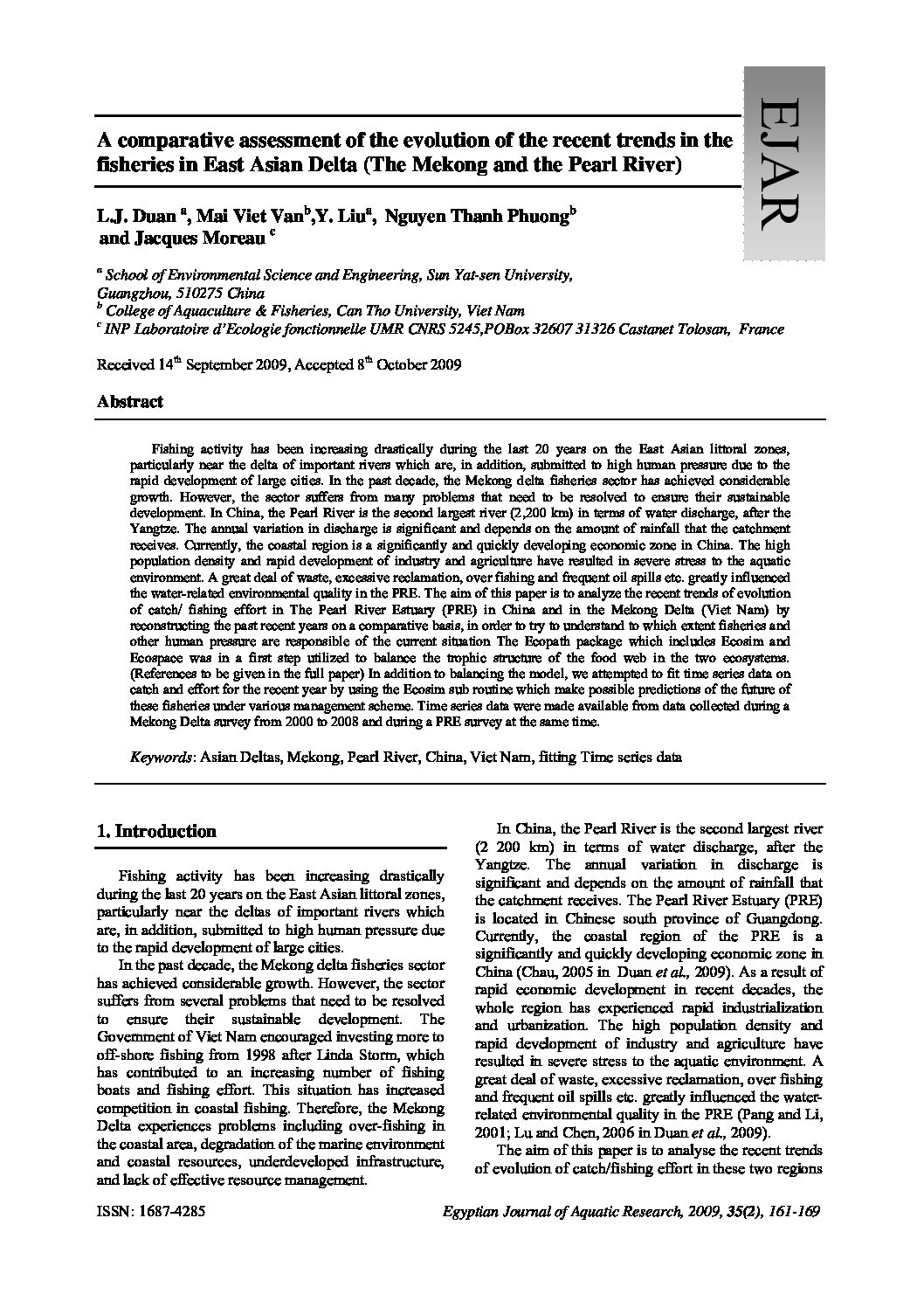Categories
vol-35Mycoremediation of a mixture of heavy metals by a local marine
Fusaruim solani
Hala Y. A. El-kassas
Microbiology Laboratory, Marine Environmental Division
National Institute of Oceanography and Fisherie, Keyed Bay, El-Anfoushy, Alexandria, Egypt.
E-mail: [email protected]
Received 16th August 2009, Accepted 15th September 2009
Abstract
A heavy metal resistant marine fungus was isolated from a polluted sea spot in the Mediterranean, Alexandria,
Egypt during June 2009. It was identified to the species level as Fusaruim solani. The fungal isolate effectively uptake
mixtures of Pb (II) and Zn (II) from aqueous solution. Transmission Electron Microscopy (TEM) studies showed that,
the fungus exhibited both adsorption of the metals on the fungal cell wall and accumulation within the cells. So
removal of lead and zinc by the marine fungus Fusaruim solani was investigated in a batch system. pH 5 proved to be
the most favorable for metal ions removal (88% and 91%) for Pb (II) and Zn (II) ,respectively . The maximum uptake of
Pb (II) and Zn (II) occurred when using biomass of 3.75 mgL-1. Statistical analyses revealed that there was a direct
relationship between lead removal and zinc removal (P<0.01) .A 22
full factorial statistical design with three center point
replicates was employed in the metal uptake experiments. The tested metals at two different initial concentration ranges
(low and high), were used. After 75 minutes, metal removal at low concentration (100 mgl-1 for each) was 97 and 85 %
for Pb (II) and Zn (II) respectively. While, at high concentration (150 mgl-1) it was 92% for each . A statistical
interpretation of the results was substantiated by the factorial analysis of variance (ANOVA). It revealed that, some of
the main effects and two way interactions between Pb (II) and Zn (II) were significant (P< 0.001) and affect the two
metal removal by F. solani. Overall, the results indicated that both metals taken up by the marine F. solani with lead
may be accumulated extracellular in the mycelia .These metals may enter the marine ecosystem food web, of which
marine fungi are integral members.
Keywords: marine fungal isolate; 22
full factorial design; lead; zinc; statistical analysis







